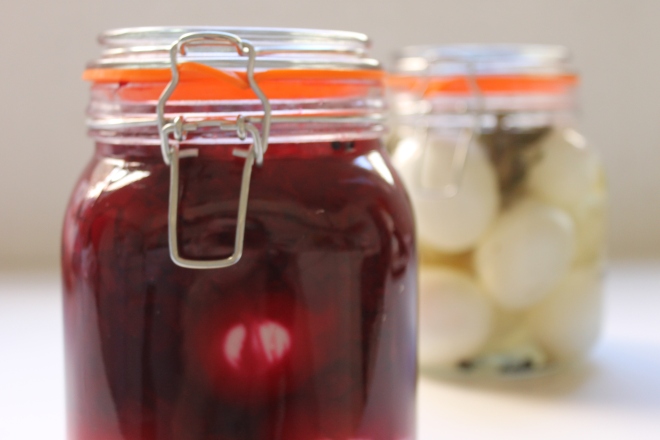One of the lovely things about being in back in California for the summer is fresh summer fruits. I’ve been picking blackberry and roasting plums in red wine and gorging myself on fresh cherries. And recently, I was able to get my hands on some greengages.
Greengages are a type of plum and, as the name suggests, a gorgeous green colour even when ripe. They’re on the smaller side, a sweet, tart mouthful each. Known in France as the Reine Claude, they’re hard to come by in California and even harder to find in Australia but absolutely worth it if you can find some.

Martinvl, CC BY-SA 3.0 <https://creativecommons.org/licenses/by-sa/3.0>, via Wikimedia Commons
I wanted to showcase these gorgeous plums with a historic recipe that wouldn’t cook them down too much. In the end I actually didn’t have that many recipes to choose from, in part because greengages were only introduced to England from France in the early 18th century and also I suppose because you could use greengages in most recipes that just call generically for plums.
Alexis Soyer, the Victorian celebrity chef, has recipes for greengage compote, small tarts, dumplings and the intriguing crusts of fruit in his 1850 edition of The Modern Housewife or, Ménagère:
Crusts of Fruit.—Put a quarter of a pound of butter in a sauté- or frying-pan, sprinkle a little sugar over, cut four or five slices of bread a quarter of an inch thick, three inches long, and one and a half wide, lay in your pan; take one dozen of greengages, open them in two, they must not be too ripe, lay the skin part on your bread, put a pinch of sugar in each, put it in a hot oven for twenty minutes; have ready a salamander or a hot shovel, and hold it over it for a few minutes, dish and serve hot or cold; the oven ought to be hot enough to give a nice yellow color to the bottom, which will eat crisp.
He also has a recipe for “flancs”
Flancs, with any kind of fruit, like a vol-au-vent, are more easily made, and are equally as good a side dish. This may be made of half-puff or short paste, and fill with raw cherries and some pounded sugar over: bake together. Greengages, apricots, or any kind of plums, will require a hotter oven than for flour only in it, the fruit giving moisture to the paste; if baked in a slow oven will be heavy, and consequently indigestible.
This is not the first time Soyer wrote recipes for a flanc, in The Gastronomic Regenerator (1846) he has a recipe for ‘Flanc à la Creme Pralinée’ which is for a tart filled with frangipane and almonds. Included in the chapter for ‘Entremets’, surrounded by pastry recipes and following directly after several recipes for fruit flans, at first this seems like a typo or maybe a variant spelling of flan.
But as Soyer explains in the Modern Housewife “AT this part of the dinner there are those dishes which are called Flancs, by which is understood, those dishes whose contents are not so large as the removes and not so small as the entrées, and the Receipts for which may be taken from either of those departments, with this difference;—instead of meat or poultry being cut up, it should be left whole: for instance, a loin of mutton, instead of being cut up into cutlets, should be served whole, with some sauce under it, and a duck, instead of being divided, should be left whole, with some sauce. It is also a great addition in the appearance of the table, and should always be served in a differently-formed dish to the entrées or removes; and are only required when eighteen or twenty persons dine, and four corner dishes are used.”

Sample menu for a two course meal for August from The London Art of Cookery by John Farley (1811) showing the four corner dishes that Soyer refers to. The ‘flancs’ are probably the tartlet and cheese cakes in the second course, and the chicken and French pie in the first course.
The term seems to be more related to the direct translation of the French flanc meaning side reflecting the layout of a meal served à la Française. Unlike in a modern restaurant meal (served à la Russe) where each course is served one after the other with one dish at a time to each individual diner, a meal served à la Française may still have multiple courses but many dishes are laid out on the table at the same time for each diner to take a serving of the different dishes. The layout, and especially the symmetry, of the different dishes was an important part of the meal and for highlighting the hostess’s skill.

Sample layout of dishes for the first and second courses from The Complete Economical Cook, and Frugal Housewife by Mary Holland (1837).

Sample two course menu from The Complete Economical Cook, and Frugal Housewife by Mary Holland (1837). Notice how the second course combines sweet and savoury dishes, and hot and cold.
In these meals, the centrepieces of each course would be placed that the top and bottom of the table, closest to the host and the hostess. These typically consisted of soup and fish in the first course and roast meats in the second course. These dishes could be removed once eaten and replaced by ‘removes’. Laid out around the main dishes during each course were ‘made-dishes’, also called entrées and entremets, which could be sweet or savory but generally became lighter and sweeter as the meal went on. Soyer’s flancs fit into this category as a kind of side dish, normally served cold alongside the more elaborate entrees and the larger meats.

Sample menus from The Cook’s Guide, and Housekeeper’s and Butler’s Assistant by Charles Francatelli (1863) show how seasonal menus for different numbers of diners were still made up of the same elements: soup, fish and roast meat in sequential removes served wtih entrees and entremets. The second course of the dinner for 6 people includes a Flance of pears and rice although unfortunately no recipe is included.
The problem with this theory is that the term flanc nearly always refers to a kind of sweet tart normally filled with fruit but occasionally even with sweet noodles, and it continues in use until the end of the 19th century when dining à la Française had been nearly completely replaced by dining à la Russe. Frederick Vine’s Practical Pastry published in 1894 has recipes for apples, gooseberries, greengages and apricots baked into tarts. A recipe for ‘flanc of peaches’ is included in both Cassell’s Dictionary of Cookery (1896) and Harper’s Cookbook Encyclopedia (1902) while Mrs de Salis offers a completely different style of recipe in The Lady’s Realm (1897).
So, does ‘flanc’ refer to the type of dish and it’s place within the meal, or is it a sweet tart generally with a fruit filling in a raised crust? I’m not sure, and this isn’t the only thing about the recipes that is a bit of a conundrum.

The Recipe
The version I made comes from Mrs Beeton’s The Book of Household Management (1861).
FLANC OF APRICOTS, or Compote of Apricots in a Raised Crust.
(Sweet Entremets.)
- INGREDIENTS.—3/4 lb. of short crust No. 1212, from 9 to 12 good-sized apricots, 3/4 pint of water, 1/2 lb. of sugar.
Mode.—Make a short crust by recipe No. 1212, and line a mould with it as directed in recipe No. 1391. Boil the sugar and water together for 10 minutes; halve the apricots, take out the stones, and simmer them in the syrup until tender; watch them carefully, and take them up the moment they are done, for fear they break. Arrange them neatly in the flanc or case; boil the syrup until reduced to a jelly, pour it over the fruit, and serve either hot or cold. Greengages, plums of all kinds, peaches, &c., may be done in the same manner, as also currants, raspberries, gooseberries, strawberries, &c.; but with the last-named fruits, a little currant-juice added to them will be found an improvement.
Time.—Altogether, 1 hour to bake the flanc, about 10 minutes to simmer the apricots.
Average cost, 1s. 6d.
Sufficient for 1 entremets or side-dish.
Seasonable in July, August, and September.
The basic recipe refers to two other recipes to make the pastry case:
1212. INGREDIENTS.—To every pound of flour allow 2 oz. of sifted sugar, 3 oz. of butter, about 1/2 pint of boiling milk.
Mode.—Crumble the butter into the flour as finely as possible, add the sugar, and work the whole up to a smooth paste with the boiling milk. Roll it out thin, and bake in a moderate oven.
Average cost, 6d. per lb.
FLANC OF APPLES, or APPLES IN A RAISED CRUST.
(Sweet Entremets.)
- INGREDIENTS.—3/4 lb. of short crust No. 1211 or 1212, 9 moderate-sized apples, the rind and juice of 1/2 lemon, 1/2 lb. of white sugar, 3/4 pint of water, a few strips of candied citron.
Mode.—Make a short crust by either of the above recipes; roll it out to the thickness of 1/2 inch, and butter an oval mould; line it with the crust, and press it carefully all round the sides, to obtain the form of the mould, but be particular not to break the paste. Pinch the part that just rises above the mould with the paste-pincers, and fill the case with flour; bake it for about 3/4 hour; then take it out of the oven, remove the flour, put the case back in the oven for another 1/4 hour, and do not allow it to get scorched. It is now ready for the apples, which should be prepared in the following manner: peel, and take out the cores with a small knife, or a cutter for the purpose, without dividing the apples; put them into a small lined saucepan, just capable of holding them, with sugar, water, lemon juice and rind, in the above proportion. Let them simmer very gently until tender; then take out the apples, let them cool, arrange them in the flanc or case, and boil down the syrup until reduced to a thick jelly; pour it over the apples, and garnish them with a few slices of candied citron.
While making the filling is straightforward enough, the pastry is very oily and I had to press it into the tin instead of rolling it out. Then the recipe says to fill the raw pastry case with flour and bake it in order to blind bake it.This isn’t a technique I’ve seen before, but it seems to be common to several of the flanc recipes including the ‘Flanc de Nouilles méringuées’ (Flanc of Meringue-d Noodles) from The Art of French Cookery (1827) which is the earliest recipe I’ve found so far.

Recipe for Flanc de Nouilles méringuées from The Art of French Cookery (1827)
I was very nervous about this and wasn’t sure if I should put a layer of baking paper in the pastry first to make getting rid of the flour easier. In the end I didn’t, and it actually worked really well with the flour absorbing some of the oiliness of the pastry. Yet another example of how historical recipes often work if you just follow them! This made a very crisp pastry that stayed firm even when the quite liquid filling was put into it and was still crispy two days later. It’s definitely a method that I will be using again.
The filling itself is simple to make although I probably left the greengages in the syrup a little too long. You want them to change colour but not for the skin to start falling off them, it’s really only a couple of minutes. I then cooked the syrup down until it was starting to gel, testing it as if for jam. It will thicken a bit more as it cools, so don’t take it too far.
Overall, this makes one of the most delicious fruit tarts I’ve ever tasted with the sweetness of the syrup offset by the tartness of the greengages and balanced by the rich, biscuit-y pastry.

The Redaction
Flanc of Greengages
3/4 cups water
226g sugar
9-12 greengages, halved and pitted
226g plain flour, plus flour to fill the pastry case
57g sugar
85g cold butter, cubed
1.2 cups boiling milk
- Boil the sugar and water together in a medium saucepan for 10 mins. Turn down the heat to medium-low and add the greengages. Remove the greengages after 2-3 minutes when fully yellow and the skin is just starting to wrinkle.
- Continue boiling syrup until light gel forms (20-30 mins) then allow the syrup to cool.
- Heat the oven to 180°C. To make the pastry, place the flour and sugar in a mixing bowl and rub in the butter. Heat the milk and add enough milk to bring the dough together into a smooth paste.
- Butter a shallow pie dish and press the dough into the dish to make a case. Fill it with plain flour, then bake for 45 minutes. Use a spoon to carefully remove the flour and discard the flour. Use a pastry brush to remove any remaining flour, then put the case back in the oven and back for 15 minutes at 170°.
- When the case is golden brown and crispy, but not burnt at the edges, remove it from the oven. Arrange the greengages in the case and spoon over enough of the syrup to fill in the gaps between the fruit. Serve warm or cold.
For more about the history of dining, see:
Flandrin, Jean Louis. Arranging the Meal: A History of Table Service in France. English-Language ed, University of California Press, 2007.
Gray, Annie. “‘Perfection and Economy’: Continuity and Change in Elite Dining Practices, ca. 1780-1880.” The Importance of British Material Culture to Historical Archaeologies of the Nineteenth Century, edited by Alasdair Mark Brooks, University of Nebraska Press, 2015, pp. 216–42.

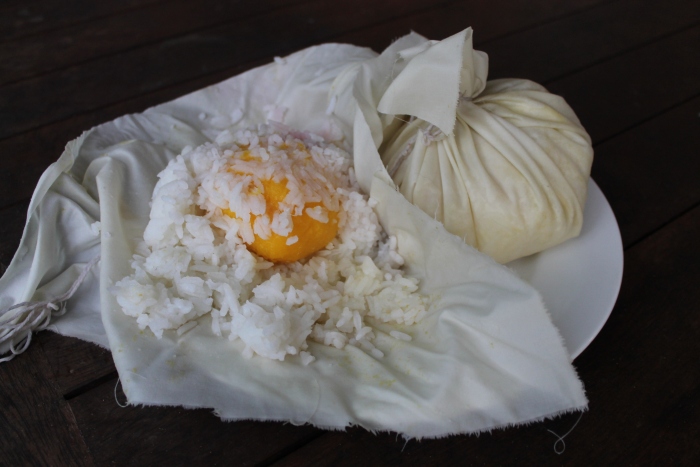












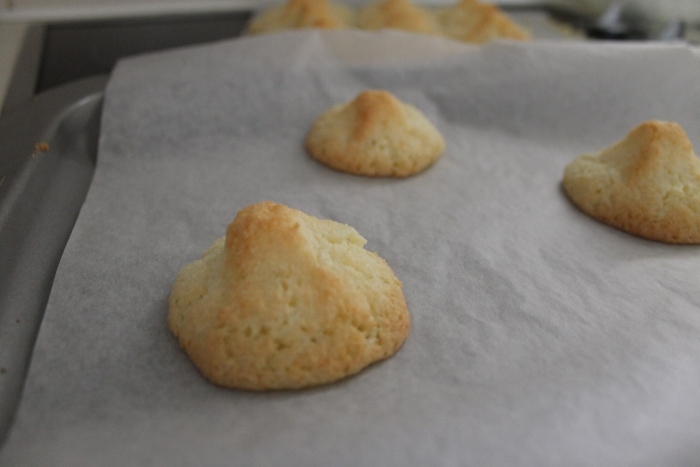
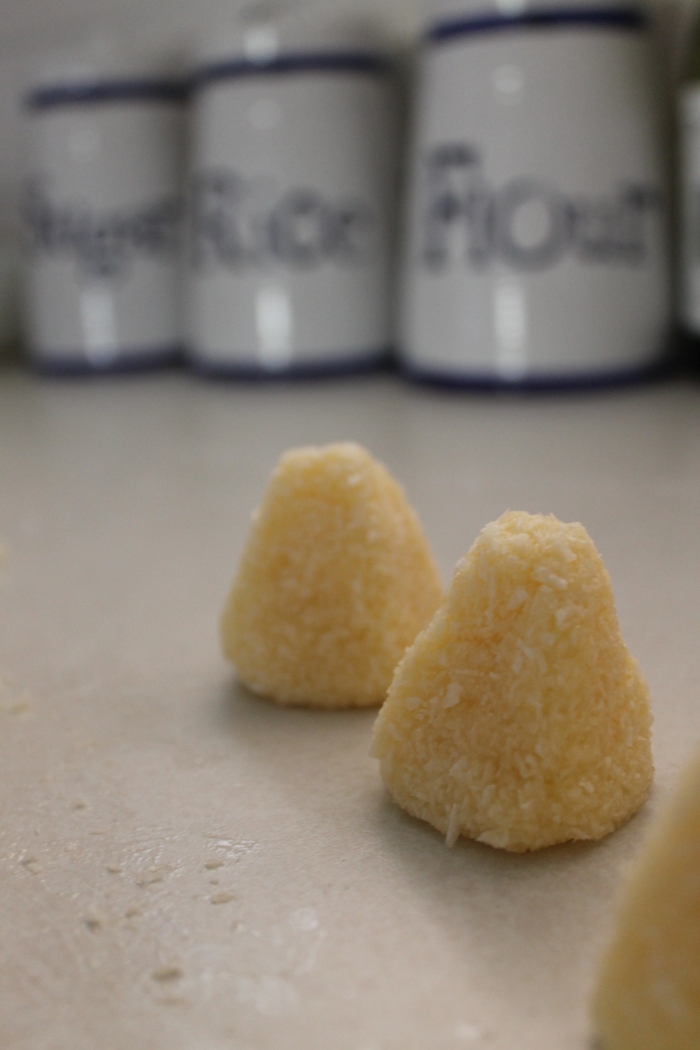




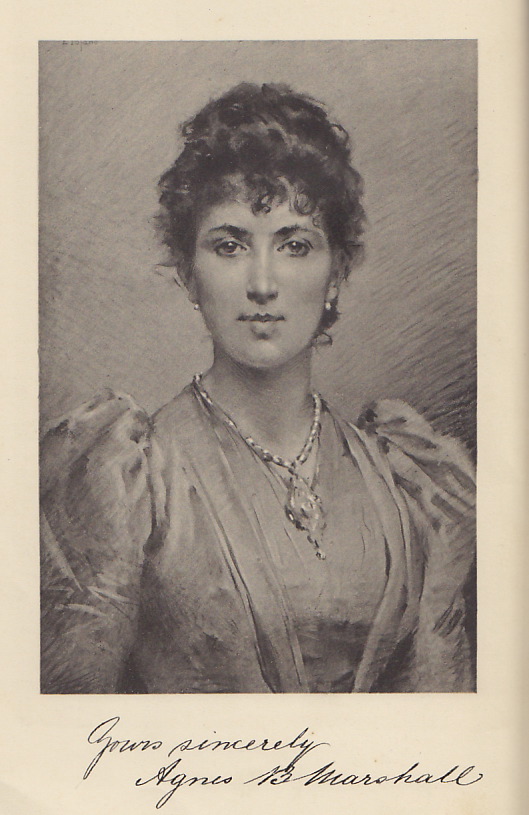
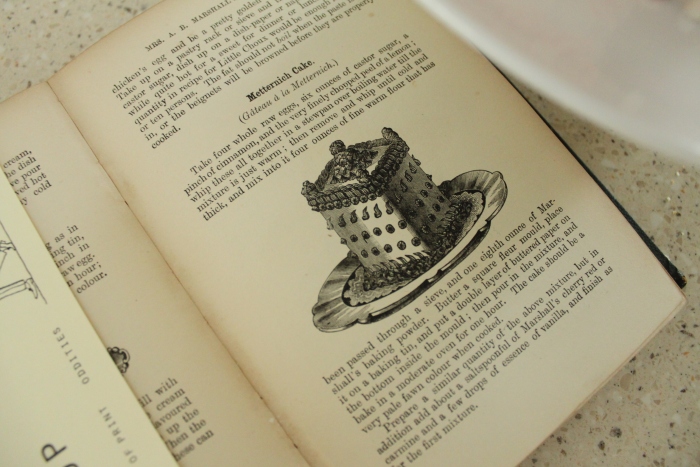
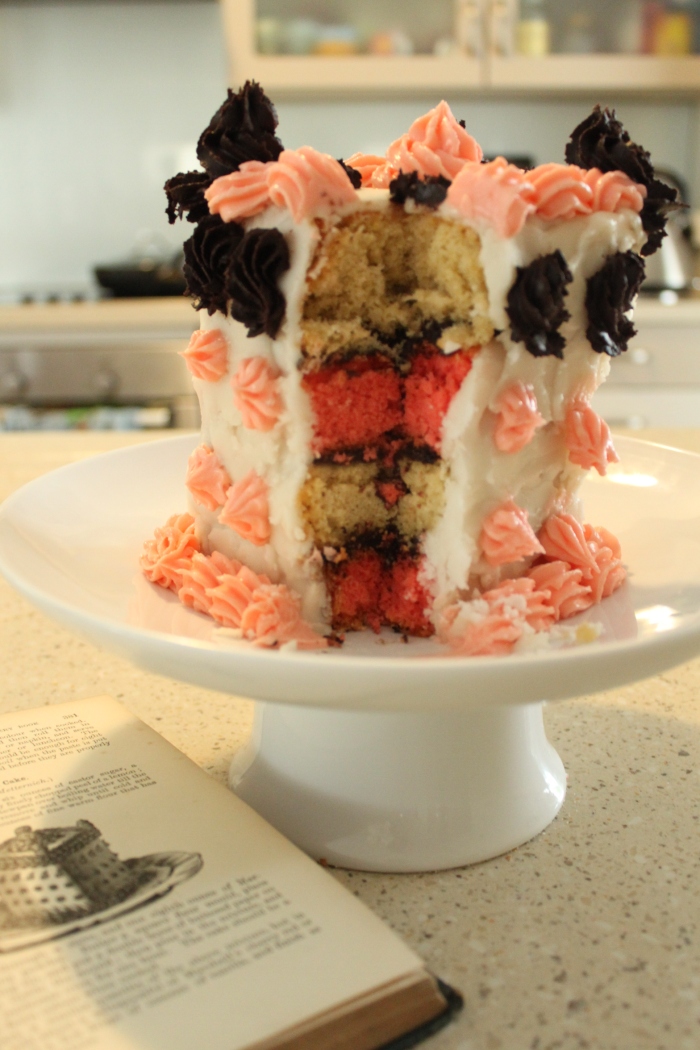
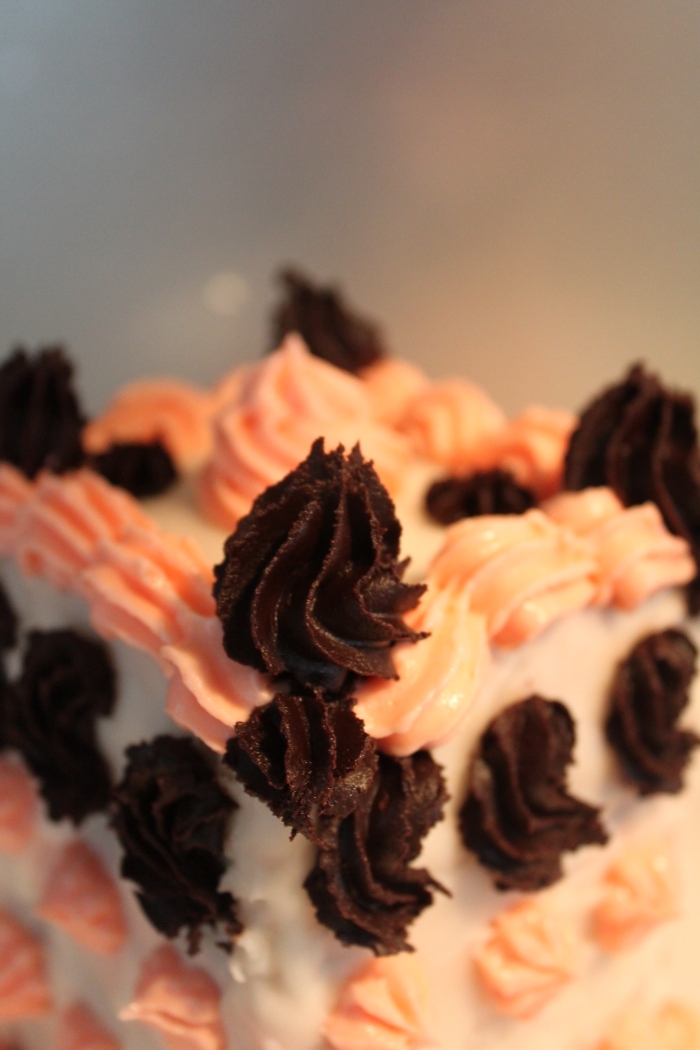



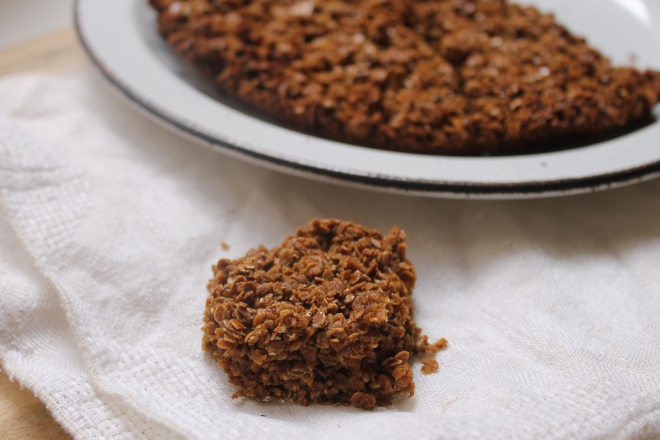
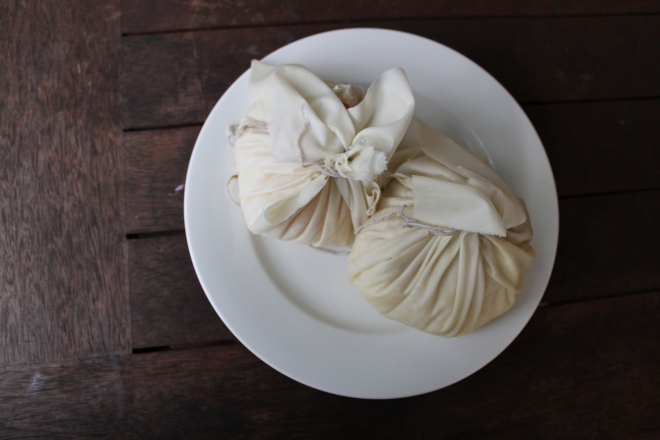
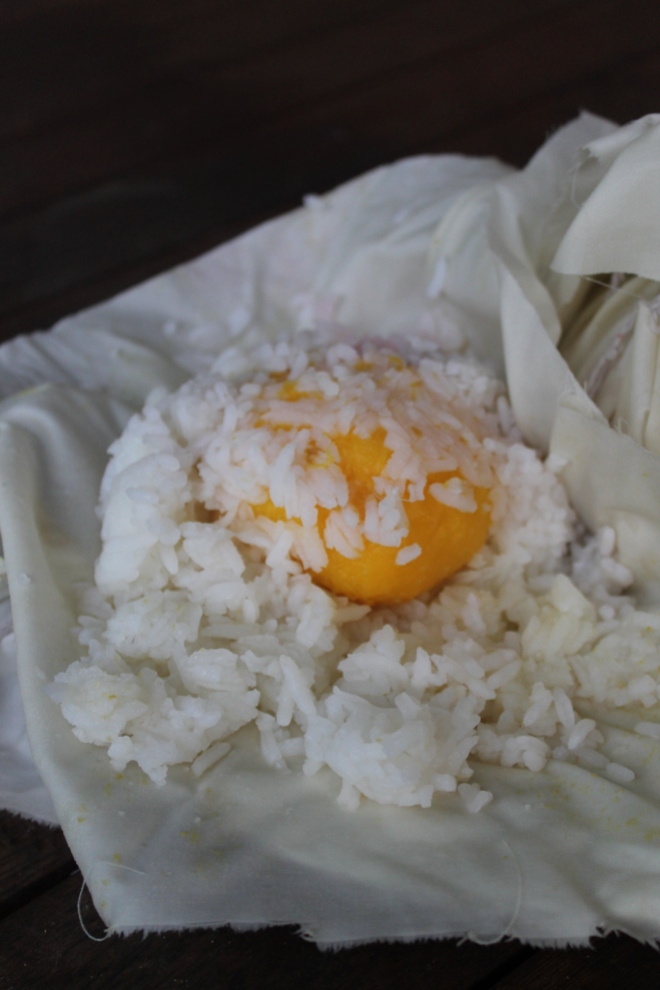
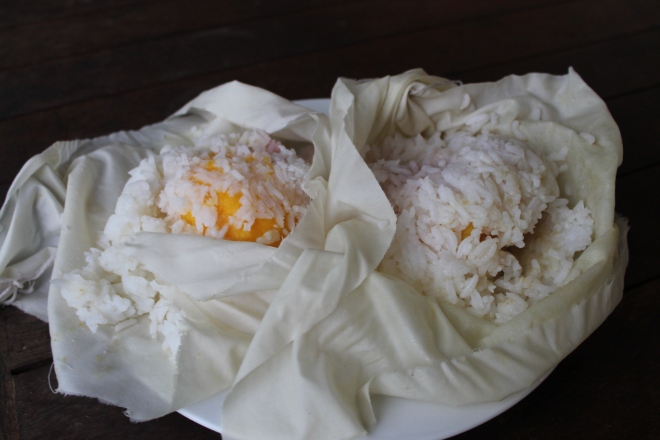
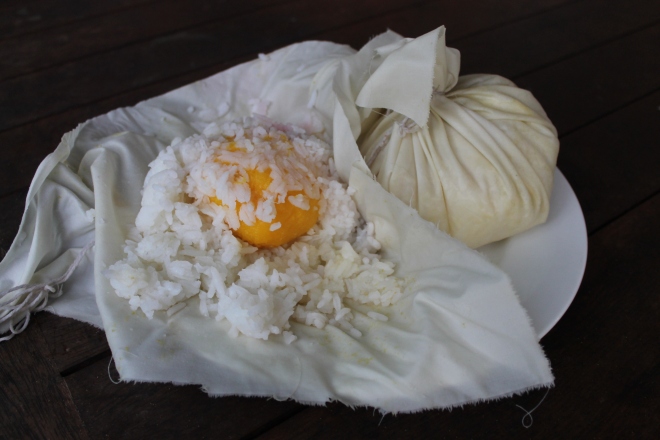

![Girl with a Basket of Eggs by Joachim Beuckelaer (circa 1533–1575) [Public domain], via Wikimedia Commons](https://turnspitandtable.files.wordpress.com/2015/09/beuckelaer_girl_with_a_basket_of_eggs.jpg?resize=496%2C387)

